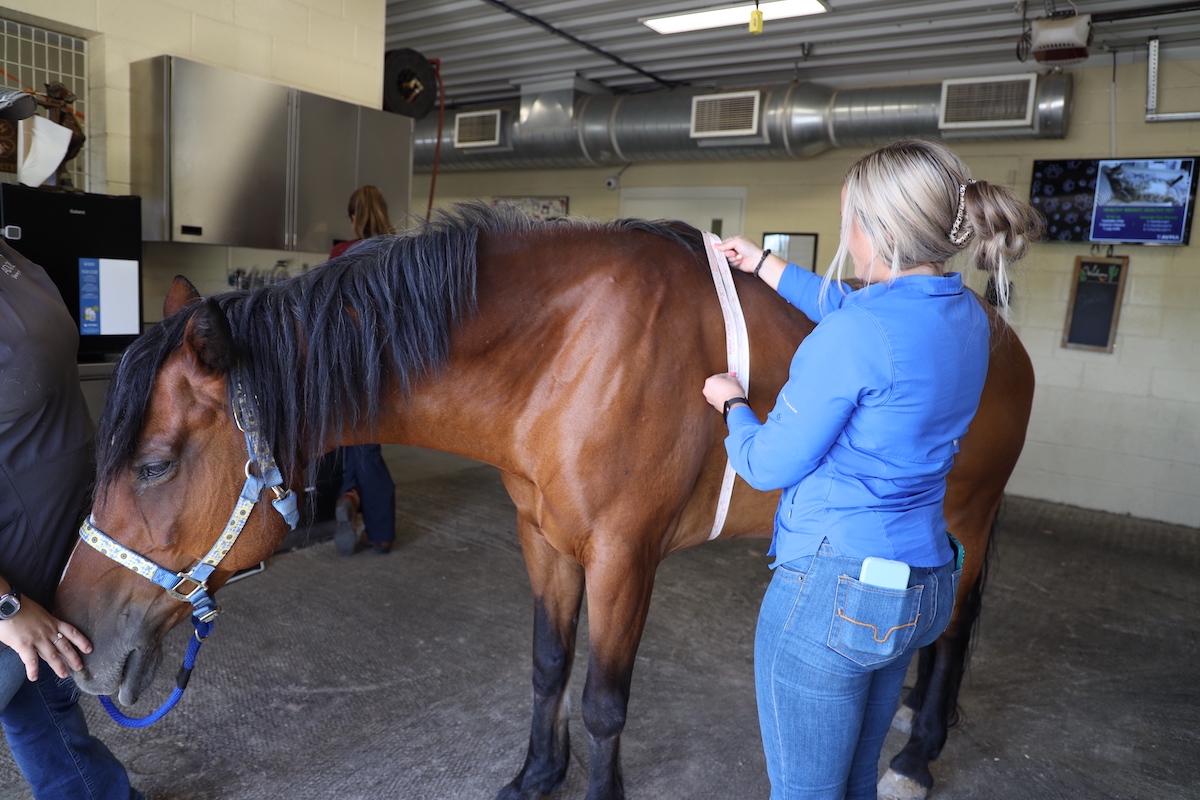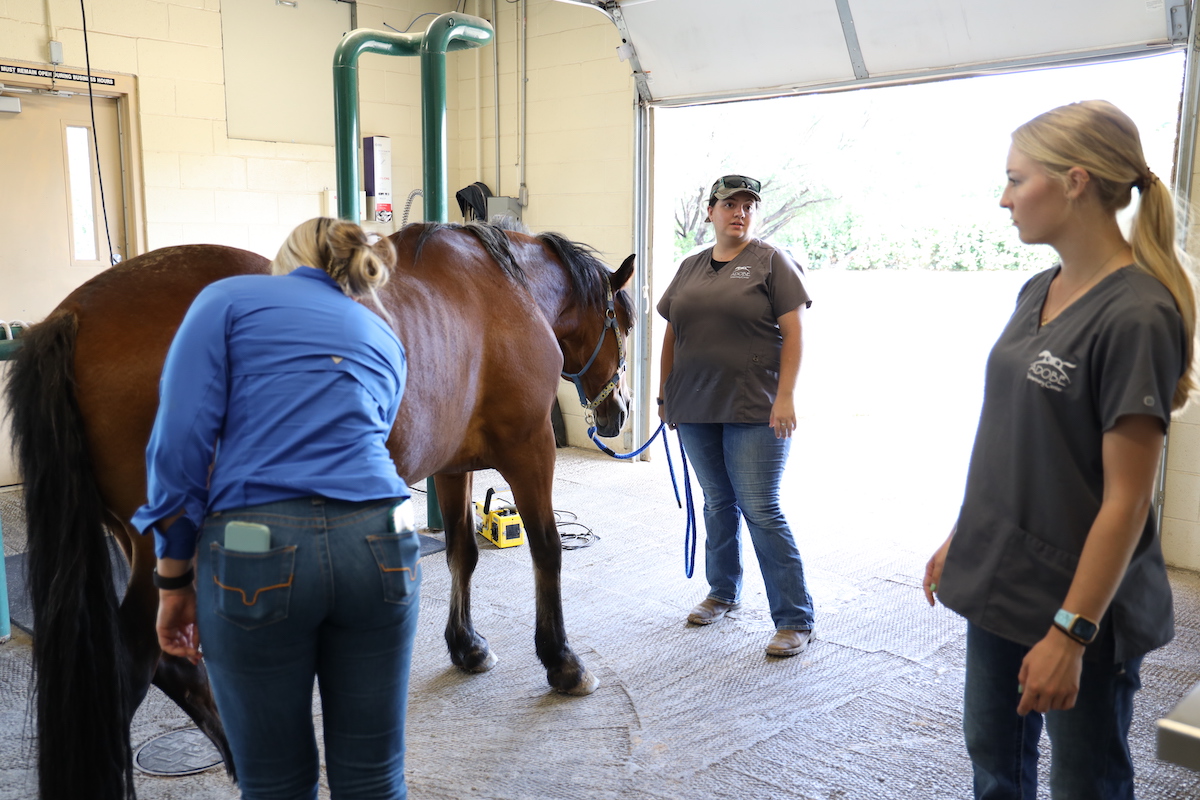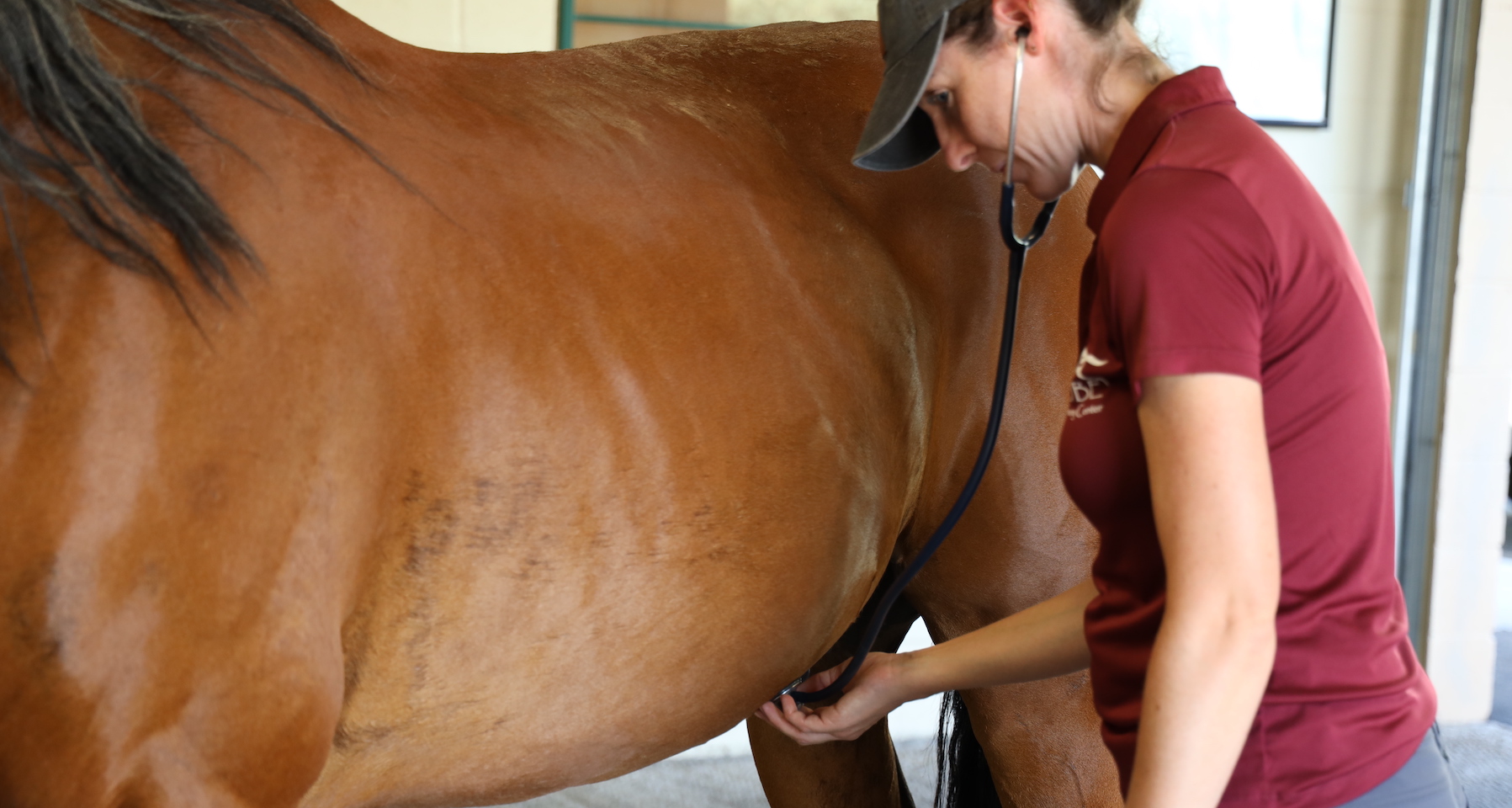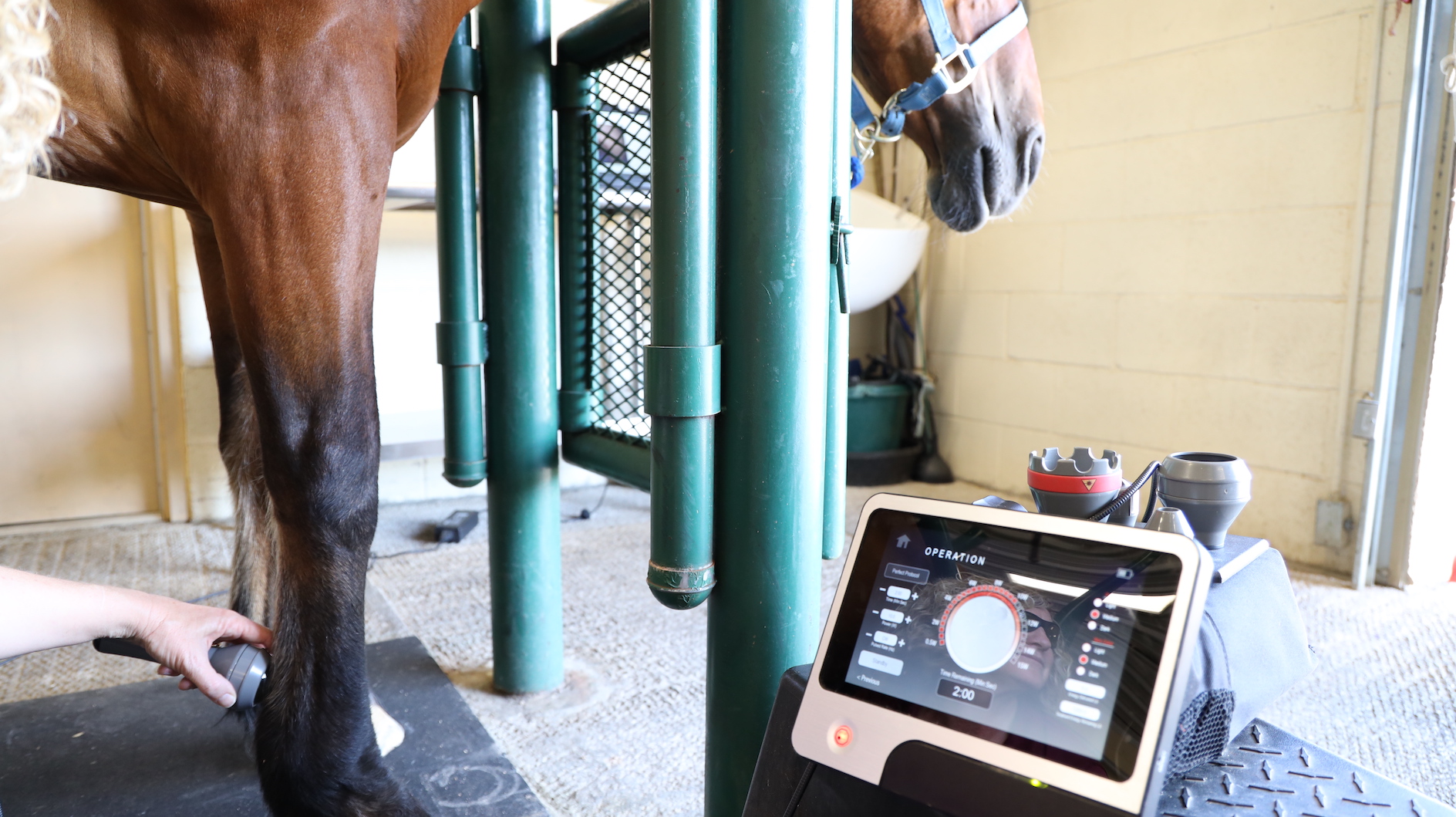
Equine Ultrasound
An experienced equine veterinarian can glean much information from performing a thorough physical examination of a horse. However, physical examination alone does not always provide enough information about a horse’s anatomy to accurately diagnose health problems, evaluate the animal’s musculoskeletal system, or to assist with treatment and monitoring of the reproductive system.
While x-rays can provide invaluable information about a patient’s bone structures, equine ultrasound is one of the most useful diagnostic tools available for equine veterinarians. At Adobe Veterinary Center, our veterinarians can visually evaluate our patients with both mobile and on-site equine ultrasound capabilities.
What Is an Equine Ultrasound?
An ultrasound, also called a sonogram, is a moving, real-time image of a patient’s internal anatomy and structures.
An ultrasound image is produced by an ultrasound machine that uses high-frequency (ultrasonic) sound waves to penetrate the body’s tissues. A special wand emits these sound waves and then listens for them to bounce back (like an echo) off of internal structures. The ultrasound machine’s computer then translates the reflected sound waves into an image.
In addition to using sound waves rather than x-ray radiation, an ultrasound differs from an x-ray in that it produces a moving, real-time picture, while x-rays are only still images of internal structures. As a result, ultrasounds can be used to evaluate a patient’s anatomy and body as it functions.


How Equine Veterinarians Use Ultrasound
Equine veterinarians use ultrasound to view and evaluate the internal soft tissues and structures of our patients. This includes (but is not limited to) muscles, tendons, ligaments, and joints in addition to the back, neck, and abdominal, thoracic, and reproductive organs.
With ultrasound capabilities, we can detect and diagnose a variety of conditions including diseases and developmental disorders. Additionally, we can assess organ function, size, shape, and location in addition to evaluating joint structure and detecting abnormalities that could indicate disease or other dysfunction.
Ultrasound is highly useful in reproductive medicine, as it can be used to detect and monitor pregnancy and gestation. We also commonly use ultrasound to evaluate cardiovascular problems, such as heart murmur, in horses while establishing and monitoring ongoing treatment plans.
Diagnostic Imaging and Complete Equine Veterinary Care in Tucson
At Adobe Veterinary Center in Tucson, our equine veterinarians are highly experienced in providing comprehensive care to equines using our advanced ultrasonic imaging. In addition to equine ultrasound, we have access to a complete suite of veterinary diagnostics and more.
To learn more about equine diagnostics, ultrasound, and our complete equine veterinary services, we welcome you to contact us today.








